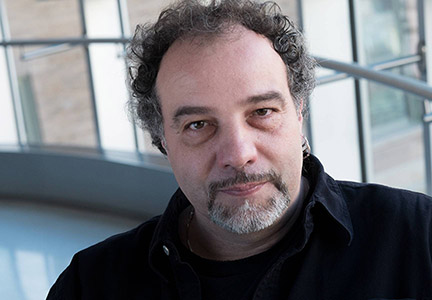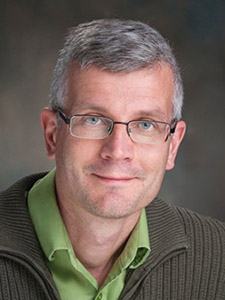Google Doodle Honours Har Gobind Khorana
Posted on January 9, 2018

Gobind Khorana was a Biochemistry professor at UBC in the 1950’s. He was an expert on chemical synthesis of proteins and nucleic acids. When he was working with Marshall W. Nirenberg at the University of Wisconsin, their research uncovered how DNA’s genetic code determines protein synthesis – which dictates how cell functions. That discovery earned the two of them the 1968 Nobel Prize in Phsysiology or Medicine “for their interpretation of the genetic code and its function in protein synthesis.”
Read More | No Comments
Posted on January 5, 2018
 “Cysteine arylation to engineer and discover proteins,” by Bradley Pentelute, Associate Professor, Massachusetts Institute of Technology.
“Cysteine arylation to engineer and discover proteins,” by Bradley Pentelute, Associate Professor, Massachusetts Institute of Technology.
Monday, May 28th, 2018 at 3:00 pm, LSC#3, 2350 Health Sciences Mall.
(Note: Staying in original room LSC #3, as renovation plans are delayed.)
Read More | No Comments
Posted on January 5, 2018
 “Electron microscopy approaches to studying lipid-protein interactions,” by Thomas Walz, Professor, the Rockefeller University.
“Electron microscopy approaches to studying lipid-protein interactions,” by Thomas Walz, Professor, the Rockefeller University.
Monday, April 30, 2018, at 3:00 pm, LSC#3, 2350 Health Sciences Mall.
Read More | No Comments
Posted on January 5, 2018
 “Viral strategies to hijack and alter host cell functions during picornavirus replication.” by Bert Semler, University of California, Irvine.
“Viral strategies to hijack and alter host cell functions during picornavirus replication.” by Bert Semler, University of California, Irvine.
Monday, April 23, 2018 at 3:00 pm, LSC #3, 2350 Health Sciences Mall.
Read More | No Comments
Posted on January 5, 2018
 “Engineering development form stem cells,” by Peter Zandstra, UBC, MSL & School of Biomedical Engineering.
“Engineering development form stem cells,” by Peter Zandstra, UBC, MSL & School of Biomedical Engineering.
Monday, April 9, 2018 at 3:00 pm,LSC#3, 2350 Health Sciences Mall.
Read More | No Comments
Posted on January 5, 2018
 “Mitochondrial Fe-S Cluster assembly machinery,” by Miroslaw Cygler, University of Saskatchewan.
“Mitochondrial Fe-S Cluster assembly machinery,” by Miroslaw Cygler, University of Saskatchewan.
Monday, March 12, 2018 at 3:00 pm, LSC #3, 2350 Health Sciences Mall.
Read More | No Comments
Posted on January 5, 2018
 “Highly fluorescent RNA Mango aptamers for in vitro imaging and RNP purification”, by Peter Unrau, Professor, Simon Fraser University.
“Highly fluorescent RNA Mango aptamers for in vitro imaging and RNP purification”, by Peter Unrau, Professor, Simon Fraser University.
Monday, January 22, 2018 at 3:00 pm, LSC #3, 2350 Health Sciences Mall.
Read More | No Comments
Posted on December 18, 2017
 “Lipoprotein(a): The story of Clinical Probability and Scientific Uncertainty”, by Marlys Koschinsky, Western University.
“Lipoprotein(a): The story of Clinical Probability and Scientific Uncertainty”, by Marlys Koschinsky, Western University.
Special seminar to celebrate Dr. Ross MacGillivray’s retirement.
Monday, January 15, 2018 at 2:00 pm, LSC # 3, 2350 Health Sciences Mall
Read More | No Comments
Posted on December 13, 2017
 Wishing you a very Merry Christmas and a Happy New Year!
Wishing you a very Merry Christmas and a Happy New Year!
Biochemistry and Molecular Biology office will be closed for the holidays, from noon Friday, December 22 and will re-open Tuesday, January 2, 2018.
Read More | No Comments
Posted on December 4, 2017
 “The catabolism of the last two rings of cholesterol by Mycobacterium tuberculosis“, by Adam Crowe, PhD Candidate, Eltis Lab.
“The catabolism of the last two rings of cholesterol by Mycobacterium tuberculosis“, by Adam Crowe, PhD Candidate, Eltis Lab.
Thursday, January 18, 2018 at 12:30 pm in Room 203, Graduate Student Centre, 6371 Crescent Road.
Read More | No Comments

 “Cysteine arylation to engineer and discover proteins,” by Bradley Pentelute, Associate Professor, Massachusetts Institute of Technology.
“Cysteine arylation to engineer and discover proteins,” by Bradley Pentelute, Associate Professor, Massachusetts Institute of Technology. “Electron microscopy approaches to studying lipid-protein interactions,” by Thomas Walz, Professor, the Rockefeller University.
“Electron microscopy approaches to studying lipid-protein interactions,” by Thomas Walz, Professor, the Rockefeller University. “Viral strategies to hijack and alter host cell functions during picornavirus replication.” by Bert Semler, University of California, Irvine.
“Viral strategies to hijack and alter host cell functions during picornavirus replication.” by Bert Semler, University of California, Irvine. “Engineering development form stem cells,” by Peter Zandstra, UBC, MSL & School of Biomedical Engineering.
“Engineering development form stem cells,” by Peter Zandstra, UBC, MSL & School of Biomedical Engineering. “Mitochondrial Fe-S Cluster assembly machinery,” by Miroslaw Cygler, University of Saskatchewan.
“Mitochondrial Fe-S Cluster assembly machinery,” by Miroslaw Cygler, University of Saskatchewan. “Highly fluorescent RNA Mango aptamers for in vitro imaging and RNP purification”, by Peter Unrau, Professor, Simon Fraser University.
“Highly fluorescent RNA Mango aptamers for in vitro imaging and RNP purification”, by Peter Unrau, Professor, Simon Fraser University. “Lipoprotein(a): The story of Clinical Probability and Scientific Uncertainty”, by Marlys Koschinsky, Western University.
“Lipoprotein(a): The story of Clinical Probability and Scientific Uncertainty”, by Marlys Koschinsky, Western University. Wishing you a very Merry Christmas and a Happy New Year!
Wishing you a very Merry Christmas and a Happy New Year! “The catabolism of the last two rings of cholesterol by Mycobacterium tuberculosis“, by Adam Crowe, PhD Candidate, Eltis Lab.
“The catabolism of the last two rings of cholesterol by Mycobacterium tuberculosis“, by Adam Crowe, PhD Candidate, Eltis Lab.